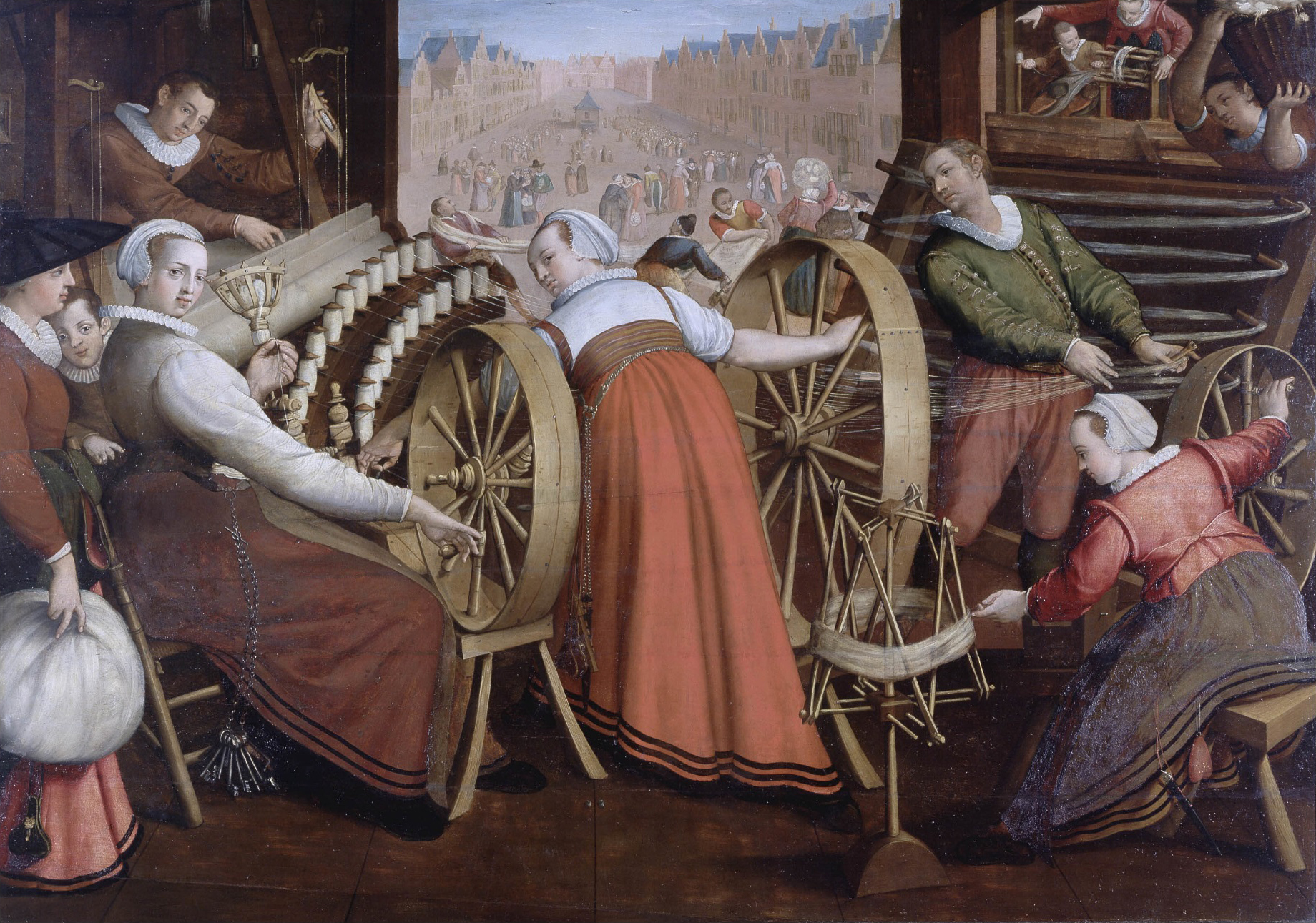
Image Courtesy: (Dutch:) Het spinnen, het scheren van de ketting, en het weven - (English:) Spinning, shearing the warp, and weaving the wool,Wikimedia Commons, public domain and Museum De Lakenhal, Leiden
This is one in a series of seven commissioned paintings by Isaac Claesz. van Swanenburg depicting the textile industry and different stages of creating wool cloth. For many centuries this was the crucial industry in the Netherlands. It was on the ships of the West- and East India Companies that raw materials such as wool, cotton, silk and colorants arrived here from across the oceans, from South Europe and Asia, as well as North and South America. The city of Leiden became the pivotal center for the production of heavy woolen cloth fabrics (known in Dutch as “laken”). Throughout the 17th-century the wool industry employed thousands of textile workers, including political and religious refugees from the Southern Netherlands, England, Germany and France, some of which would travel onward to New Netherland. From Leiden most of the cloth was exported, finding its way onto the world market via the port of Amsterdam. From here many ships filled with this much sought-after material crossed the ocean to New Amsterdam, as is shown by the original 17th-century ship logs including entries for various types of wool cloth, "laken" (uncut cloth) and "sayen" (wool cloth).
Reference:
Location: Museum de Lakenhal, Leiden https://www.lakenhal.nl/en/collection/s-421
Medium: Oil on panel,
Dimensions: height: 137.5 cm (54.1 in); width: 196 cm (77.1 in)

